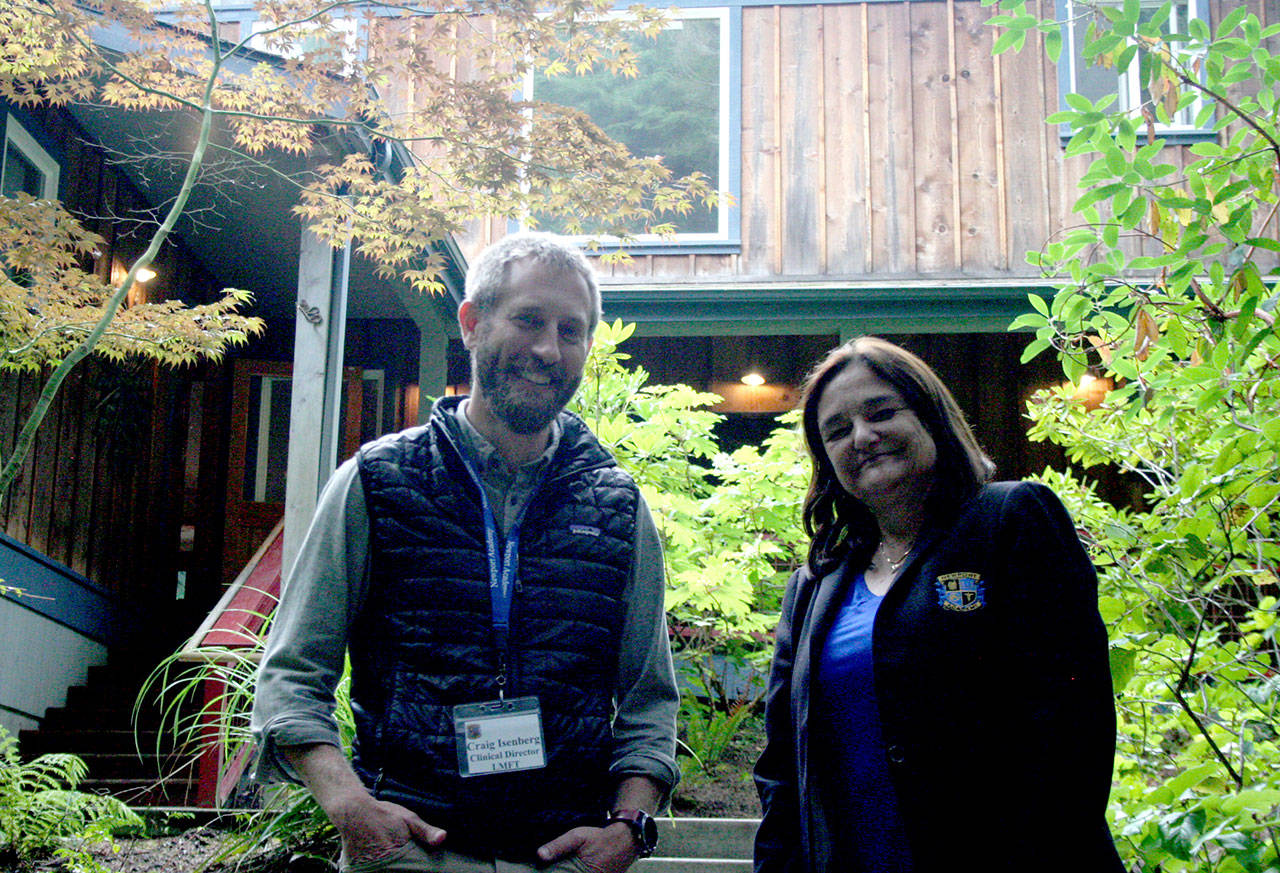PORT TOWNSEND — Gravel trails line the campus of Newport Academy Washington State, pathways that wind their way through a serene forest setting off Hastings Avenue in Jefferson County.
At what was formerly known as Gray Wolf Ranch, the privately owned, for-profit Newport Academy is home for adolescent boys through young adults, typically ages 14-24, who work with mental health and substance-abuse counselors.
The all-male residential treatment program is where Newport Academy founder Jamison Monroe and his brother spent some of their younger years as clients, said Dr. Barbara Nosal, the chief clinical officer for Newport Academy.
“This really holds a special place in his heart,” she said.
The campus reopened Aug. 1 after Newport Academy’s purchase and sale agreement became official in June. Gray Wolf Ranch was founded in 1996 and was operated as a treatment facility until the sale.
“We are thrilled to welcome the Gray Wolf Ranch campus into our Newport Academy family,” Joe Procopio, Newport Academy’s CEO, said in a press release.
Newport Academy also has residential programs in Connecticut, Northern California and Southern California.
“Our mission is to empower teens and young adults and restore families, and expanding into the Pacific Northwest will enable us to help more individuals struggling with mental health and co-occurring issues,” the release said.
Some patients already were enrolled in the academy’s re-branded program, which is described as taking a holistic approach with opportunities for therapy, yoga and outdoor experiences along with academics.
Most patients have some type of mental health diagnosis, from major depression to anxiety, said Craig Isenberg, a marriage and family therapist who works as the academy’s clinical director.
“We look at substance abuse as a symptom of the underlying mental health issue or trauma,” he said. “In our program, we are very evidence-based and very experiential. They need to experience things such as art, music, yoga and adventure.”
Outside providers typically refer patients to the academy, Nosal said. They come from local therapists, hospitals or other medical facilities, or they are referred to the campus through multimedia presentations, she said.
Statewide, about 64,000 adolescents have at least one major depressive episode annually, and less than half receive treatment, according to the academy press release.
The program said 17 percent of high school students in the state have seriously considered suicide in the past year.
The average stay ranges from 45 to 90 days, based on insurance, Nosal said.
“We do the best we can to help kids as long as we can,” she said.
While at the Port Townsend-area facility, the boys are placed in pods of six to eight people, eat and sleep on site and take part in several activities throughout each day.
One of the more important aspects is to get families involved, Isenberg said. Parent support groups and multi-family groups take part in the program every other Saturday.
“With adolescents, you can see amazing changes when you have them in the field, but when they return to whatever environment they were in, they can go right back to where they were,” he said.
“We’re teaching them emotional regulation, but we’re away from whatever has been leading to them acting out or having dramatic mood swings. Sometimes it’s a direct result of them not getting those relationships at home or in another situations.”
The main building lies at the top of a set of stairs encased in a forest canopy. Inside the reception area are offices, a kitchen and a dining room.
The trails outside lead in multiple directions. One goes to a counselor’s office inside a yurt. Farther down, a larger yurt contains computers and keyboards and serves as an academic center.
“Most of them are 14 to 19 or 20, so it’s an opportunity to initiate the process if not complete an academic component while they’re with us, in addition to the therapeutic component,” Nosal said.
Another building hosts music therapy and yoga.
As the trail climbs a short hill, a small amphitheater-like opening reveals a fire pit contained with dozens of cement blocks. A raised seating area surrounds the pit, and lighting is inconspicuously hung from the trees above.
A larger building called the tree house contains more exercise equipment, and a paved basketball court with hoops on opposite sides includes poles at mid-court where volleyball or badminton netting can be stretched.
Another area includes kayak storage and tall lines where wet clothing can be hung to dry.
Isenberg said they used to go on 10-day adventure trips to the San Juan Islands, but now they generally stick to three- or four-hour day hikes in the Olympic Mountains or at Fort Worden.
The activities help the boys connect with their underlying troubles, Isenberg said.
“This helps them to be able to get in touch with what they’re feeling, but it’s not like they’re sitting in front of a doctor at a doctor’s office,” he said.
________
Jefferson County Managing Editor Brian McLean can be reached at 360-385-2335, ext. 6, or at bmclean@peninsuladailynews.com.

